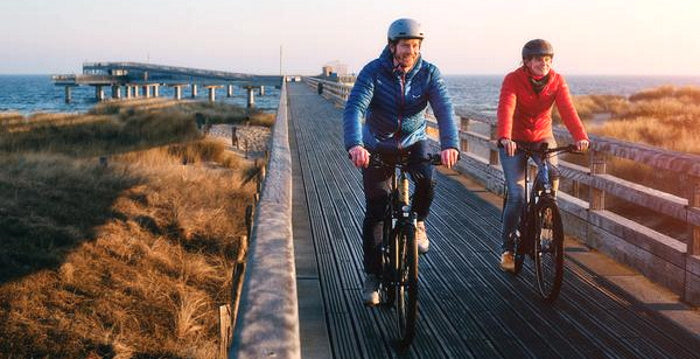The motor:
Most ebikes on the market have motors 250w or 300w, legally ebike motors cannot exceed 300w to remain classed as bikes and not mopeds. city ebikes and some hybrid ebikes will often have smaller 250w motors, while trekking and trail focused ebikes will have larger 300w motors to tackle the more challenging terrain. European assist speeds are legally limited at 25km/h, however in New Zealand this is upped to 32km/hr and most ebikes available here will have this as their top assist speed. There are also throttle assist options available on the market which can exceed this limit due to a legal loophole which does not define specifics about throttle powered ebikes, though suggestions of reforms are on the cards as ebike become much more common. There are several motor brands which dominate the ebike world. Those are Shimano, Bosch, Brose, Dapu and Bafang. Within each brand is a range of options depending on the type of bike they are fitted on. For example Shimano, which is the most commonly used motor brand, offers the E5000 (40Nm max torque), E6000 (50Nm max torque) and E6100 (60Nm max torque) respectively for City, urban and trekking ebikes. The E7000 (60Nm max torque) and E8000 (70Nm max torque) for trail and mountain ebikes, and the new for 2021 EP8 (85Nm max torque) for their all-mountain and enduro electric bikes. So how much torque a motor has, which is the measurement of the rotational force applied is a very good indicator of how powerful the motor is.
The battery:
Ebike batteries can be quite confusing at first, because there are a few measurements to consider, with voltage (V), amp hours (Ah) and watt hours (Wh) all used to describe the size of an electric bike battery. To simplify, voltage is the measurement of tension and potential power, amp hours is the measurement of the battery capacity, think of it like the fuel tank, and watt hour is the combined value of voltage and amp hours. Determining the watt hour is found by multiplying the voltage (usually 36v or 48v) with the amp hours (such as 10.4Ah, 13Ah and 17.5Ah). For example, a 36V x 17.5Ah battery comes to 630Wh and a 48V x 13Ah battery comes to 624Wh, so while the watt hours are nearly identical, the first battery will likely have a longer range with less power output compared to the second battery which may have a higher power output and a shorter range. So the range and power output of an ebike battery can be quite varied, and the expected range is also dependent on the battery consumption of the motor, the weight of the rider, and how the riders uses the different assist levels.
The components:
Aside from the motor and battery, the components are what make an ebike. As ebikes have become more and more common, leading component manufacturers have designed ebike specific parts, these parts are burlier and stronger than standard bikes, the emphasis not on making the parts as light as possible, but on making them durable enough to stand up to the extra force applied. Most ebikes also have 1x gear ratios, where as standard bikes have anywhere from 1x, 2x and 3x, so only have one sprocket up the front, this is because it is not necessary to have those additional gears thanks to the motor assist power. City bikes will generally have less gears, about 7-8, while e-mountain bikes generally boast around 10-12 to ensure they can tackle the steeper terrain in a comfortable way for the rider.
Choosing the frame:
ebikes come in all shapes and sizes, so determining which is the right size for your height is only one part of the process. Different frame designs cater to different riders, and the type of riding they are doing. Easy-entry frame designs are most common on city and hybrid ebikes and remove the top tube all together, which creates the ability to simply step over the frame and slide backwards onto the saddle, this design is ideal for elderly riders, or the less physically capable as there is no balancing or straddling required. Low top tube frame designs are common on hybrid and hardtail mountain ebikes, while the top tube is included, it dips down allowing for an easier mounting as well as quick stops, perfect for inner city riding where you may stop and start often or the geometry of shorter riders, particularly ladies who tend to have longer torsos and shorter legs compared to men’s geometry. Lastly, standard top-tube profiles are the most similar to ‘normal’ bikes and tend to have geometry less comfort focused and tailored more to speed and efficiency.
|








